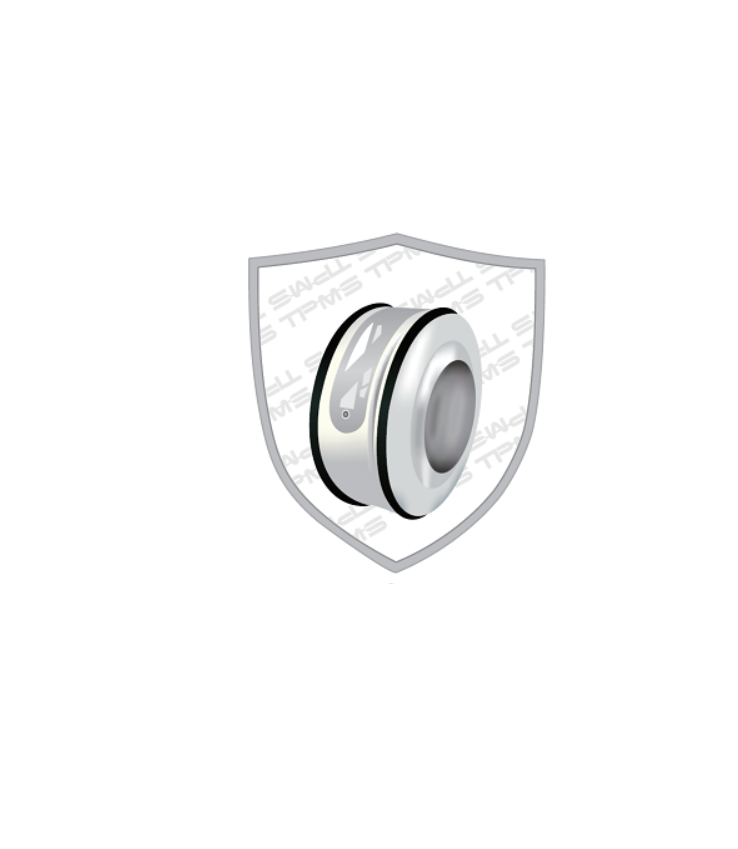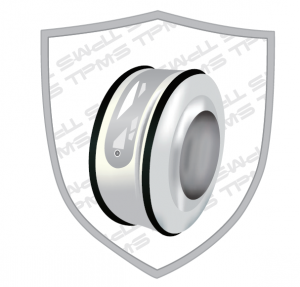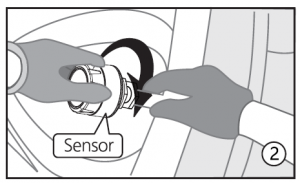TPMS Cap Sensor Installation Guide
Please read the following instructions to install the sensor onto each tire valve after programming. The sensor ontoeach tyre valve after programming.
If the sensor has not been programmed to the monitor before installation, please refer to the Monitor Manual for sensor programming.
Specification
| Pressure Range | 0-188 PSI/ 0-13 BAR |
| Working Temperature | -20°C~80°C |
| Storage Temperature | -20°C~8S°C |
| Frequency | 433.92MHz |
| Transmission Power | <10dBm |
| Pressure Accuracy | ± 1.Spsi (±0.1 bar) |
| Temperature Accuracy | ±30( |
Sensor Installation
- Screw the hex nut onto the valve stem threads until it bottoms out.
- Screw the correctly marked sensor onto the valve stem for that tire position. Tighten the sensor until the air stops leaking and the sensor bottoms-out on the valve stem. Then give it a quarter turn more to seat it. Do Not Over Tighten!
- Use your fingers to screw the hex nut up to the bottom of the sensor. Using the provided wrench, tighten the hex nut against the bottom of the sensor. This will prevent the sensor from being removed. Keep the wrench in a safe place for future use.
- To inflate or deflate the tire, you must remove the cap sensor.

- Install the anti-theft hex nut onto the tire valve.

- Install the sensor onto the tire valve clockwise.

- Tighten the anti-theft hex nut counterclockwise until the nut is tightened against the sensor.
Warning
Changes or modifications not expressly approved by the party responsible for compliance could void the user’ s authority to operate the equipment.This device complies with Part 15 of the FCC Rules. Operation is subject to the following two conditions: (1) this device may not cause harmful interference, and (2) this device must accept any interference received, including interference that may cause undesired operation.NOTE: This equipment has been tested and found to comply with the limits for a Class B digital device, pursuant to Part 15 of the FCC Rules. These limits are designed to provide reasonable protection against harmful interference in a residential installation. This equipment generates, uses and can radiate radio frequency energy and, if not installed and used in accordance with the instructions, may cause harmful interference to radio communications. However, there is no guarantee that interference will not occur in a particular installation. If this equipment does cause harmful interference to radio or television reception, which can be determined by turning the equipment off and on,the user is encouraged to try to correct the interference by one or more of the following measures:— Reorient or relocate the receiving antenna.— Increase the separation between the equipment and receiver.— Connect the equipment into an outlet on a circuit different from that to which the receiver is connected.— Consult the dealer or an experienced radio/TV technician for help.FCC Compliance StatementThe device has been evaluated to meet general RF exposure requirement.The device can be used in portable exposure condition without restriction.
Read More About This Manual & Download PDF:
[xyz-ips snippet=”download-snippet”]




